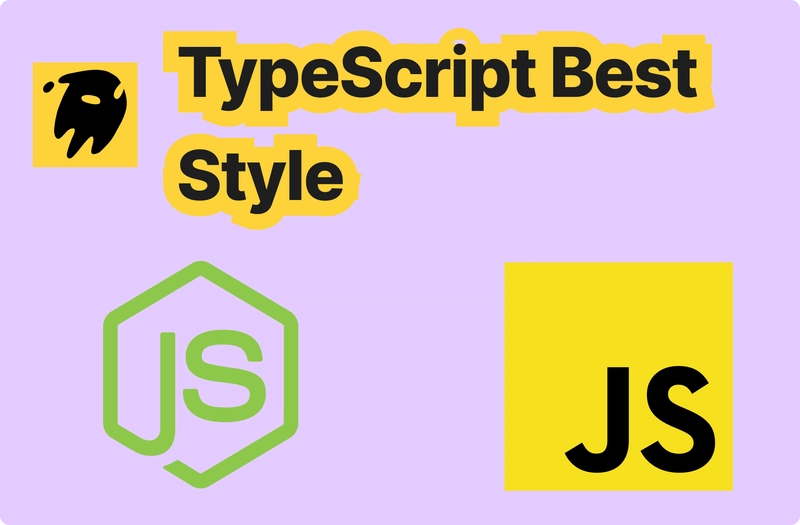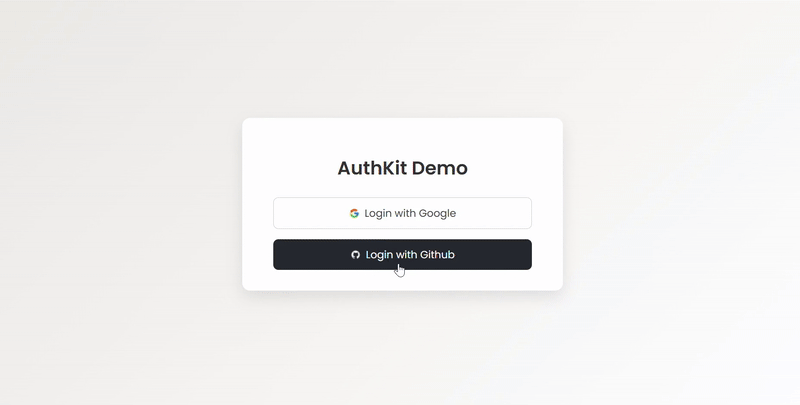How to Convert SQL Queries to API Requests (3 Methods)
Databases are the foundation for storing information in many applications. SQL (Structured Query Language) is the standard way to interact with these databases. However, directly exposing a database to the internet or even internal applications poses significant security risks and creates tight coupling between components. APIs (Application Programming Interfaces) provide a secure and standardized way to bridge this gap. An API acts as a controlled interface, allowing clients (like web browsers, mobile apps, or other services) to request data or trigger actions without needing direct database access. When a client sends an HTTP request (e.g., GET /api/users/123) to an API endpoint, an intermediary layer translates this request into a specific SQL query (e.g., SELECT * FROM users WHERE user_id = 123), executes it against the database, and returns the results, typically formatted as JSON. This tutorial delves into three distinct methods for building this intermediary layer, providing detailed explanations and code examples. Method 1: Building a Custom Backend API Application This approach involves writing server-side code using a programming language (like Python, Node.js, Java, C#, Go) and a web framework (like Flask, Express, Spring Boot, ASP.NET Core) to create dedicated API endpoints that correspond to specific database operations. This method offers the highest degree of flexibility and control. Core Workflow: Setup: Choose a language/framework and set up your project, including installing necessary libraries (web framework, database driver). Database Connection: Write code to establish and manage connections to your database. Use connection pooling in production environments for efficiency. Define Routes/Endpoints: Define URL paths (e.g., /api/products, /api/products/{id}) and associate them with specific HTTP methods (GET, POST, PUT, PATCH, DELETE). Request Handling: Within the function handling each endpoint, parse incoming request details (URL parameters, query strings, request body, headers). SQL Query Construction (Securely): Dynamically build the SQL query based on the parsed request data. Crucially, use parameterized queries (prepared statements) to prevent SQL injection vulnerabilities. Never insert user input directly into SQL strings using concatenation or standard string formatting. Database Interaction: Obtain a database connection, create a cursor, execute the parameterized query, and fetch the results. Data Transformation: Format the raw database results (rows and columns) into the desired API response structure, usually JSON. This might involve renaming fields, nesting data, or combining results from multiple queries. Response Generation: Send the formatted data back to the client as an HTTP response with an appropriate status code (e.g., 200 OK, 201 Created, 404 Not Found, 500 Internal Server Error). Error Handling: Implement robust error handling for database connection issues, query execution errors, invalid input, etc. Resource Management: Ensure database connections are always closed or returned to the pool, even if errors occur. Example (Python with Flask and PostgreSQL): Consider a PostgreSQL database with a products table: -- Sample Table Structure (PostgreSQL) CREATE TABLE products ( product_id SERIAL PRIMARY KEY, name VARCHAR(255) NOT NULL, category VARCHAR(100), price NUMERIC(10, 2), stock_quantity INTEGER ); -- Sample Data INSERT INTO products (name, category, price, stock_quantity) VALUES ('Laptop Pro', 'Electronics', 1200.00, 50), ('Wireless Mouse', 'Electronics', 25.50, 200), ('Office Chair', 'Furniture', 150.75, 100); Here's a Flask application exposing endpoints to get products: Python Code (app.py): import os import json from flask import Flask, request, jsonify import psycopg2 # PostgreSQL adapter for Python from psycopg2.extras import RealDictCursor # Returns results as dictionaries (JSON-friendly) from contextlib import contextmanager # For easier connection management app = Flask(__name__) # --- Database Configuration --- # Best practice: Use environment variables for sensitive data DB_HOST = os.environ.get("DB_HOST", "localhost") DB_NAME = os.environ.get("DB_NAME", "mydatabase") DB_USER = os.environ.get("DB_USER", "myuser") DB_PASS = os.environ.get("DB_PASS", "mypassword") DB_PORT = os.environ.get("DB_PORT", "5432") # Default PostgreSQL port DATABASE_URI = f"postgresql://{DB_USER}:{DB_PASS}@{DB_HOST}:{DB_PORT}/{DB_NAME}" # --- Database Connection Management --- @contextmanager def get_db_connection(): """Provides a database connection context manager.""" conn = None try: conn = psycopg2.connect(DATABASE_URI) yield conn # Provide the connection to the 'with' block conn.commit() # Commit changes if any (important for POST, PUT, DELETE) except psycopg2.Error as e: print(f"Database connection error: {e}") if conn: conn.rollback() # R

Databases are the foundation for storing information in many applications. SQL (Structured Query Language) is the standard way to interact with these databases. However, directly exposing a database to the internet or even internal applications poses significant security risks and creates tight coupling between components. APIs (Application Programming Interfaces) provide a secure and standardized way to bridge this gap.
An API acts as a controlled interface, allowing clients (like web browsers, mobile apps, or other services) to request data or trigger actions without needing direct database access. When a client sends an HTTP request (e.g., GET /api/users/123) to an API endpoint, an intermediary layer translates this request into a specific SQL query (e.g., SELECT * FROM users WHERE user_id = 123), executes it against the database, and returns the results, typically formatted as JSON.
This tutorial delves into three distinct methods for building this intermediary layer, providing detailed explanations and code examples.
Method 1: Building a Custom Backend API Application
This approach involves writing server-side code using a programming language (like Python, Node.js, Java, C#, Go) and a web framework (like Flask, Express, Spring Boot, ASP.NET Core) to create dedicated API endpoints that correspond to specific database operations. This method offers the highest degree of flexibility and control.
Core Workflow:
- Setup: Choose a language/framework and set up your project, including installing necessary libraries (web framework, database driver).
- Database Connection: Write code to establish and manage connections to your database. Use connection pooling in production environments for efficiency.
- Define Routes/Endpoints: Define URL paths (e.g.,
/api/products,/api/products/{id}) and associate them with specific HTTP methods (GET, POST, PUT, PATCH, DELETE). - Request Handling: Within the function handling each endpoint, parse incoming request details (URL parameters, query strings, request body, headers).
- SQL Query Construction (Securely): Dynamically build the SQL query based on the parsed request data. Crucially, use parameterized queries (prepared statements) to prevent SQL injection vulnerabilities. Never insert user input directly into SQL strings using concatenation or standard string formatting.
- Database Interaction: Obtain a database connection, create a cursor, execute the parameterized query, and fetch the results.
- Data Transformation: Format the raw database results (rows and columns) into the desired API response structure, usually JSON. This might involve renaming fields, nesting data, or combining results from multiple queries.
- Response Generation: Send the formatted data back to the client as an HTTP response with an appropriate status code (e.g.,
200 OK,201 Created,404 Not Found,500 Internal Server Error). - Error Handling: Implement robust error handling for database connection issues, query execution errors, invalid input, etc.
- Resource Management: Ensure database connections are always closed or returned to the pool, even if errors occur.
Example (Python with Flask and PostgreSQL):
Consider a PostgreSQL database with a products table:
-- Sample Table Structure (PostgreSQL)
CREATE TABLE products (
product_id SERIAL PRIMARY KEY,
name VARCHAR(255) NOT NULL,
category VARCHAR(100),
price NUMERIC(10, 2),
stock_quantity INTEGER
);
-- Sample Data
INSERT INTO products (name, category, price, stock_quantity) VALUES
('Laptop Pro', 'Electronics', 1200.00, 50),
('Wireless Mouse', 'Electronics', 25.50, 200),
('Office Chair', 'Furniture', 150.75, 100);
Here's a Flask application exposing endpoints to get products:
Python Code (app.py):
import os
import json
from flask import Flask, request, jsonify
import psycopg2 # PostgreSQL adapter for Python
from psycopg2.extras import RealDictCursor # Returns results as dictionaries (JSON-friendly)
from contextlib import contextmanager # For easier connection management
app = Flask(__name__)
# --- Database Configuration ---
# Best practice: Use environment variables for sensitive data
DB_HOST = os.environ.get("DB_HOST", "localhost")
DB_NAME = os.environ.get("DB_NAME", "mydatabase")
DB_USER = os.environ.get("DB_USER", "myuser")
DB_PASS = os.environ.get("DB_PASS", "mypassword")
DB_PORT = os.environ.get("DB_PORT", "5432") # Default PostgreSQL port
DATABASE_URI = f"postgresql://{DB_USER}:{DB_PASS}@{DB_HOST}:{DB_PORT}/{DB_NAME}"
# --- Database Connection Management ---
@contextmanager
def get_db_connection():
"""Provides a database connection context manager."""
conn = None
try:
conn = psycopg2.connect(DATABASE_URI)
yield conn # Provide the connection to the 'with' block
conn.commit() # Commit changes if any (important for POST, PUT, DELETE)
except psycopg2.Error as e:
print(f"Database connection error: {e}")
if conn:
conn.rollback() # Rollback changes on error
raise # Re-raise the exception to be caught by the route handler
finally:
if conn:
conn.close() # Ensure connection is always closed
@contextmanager
def get_db_cursor(conn):
"""Provides a database cursor context manager."""
cursor = None
try:
# RealDictCursor returns rows as dictionary-like objects
cursor = conn.cursor(cursor_factory=RealDictCursor)
yield cursor
finally:
if cursor:
cursor.close()
# --- API Endpoints ---
@app.route('/api/products', methods=['GET'])
def get_products():
"""
Fetches a list of products, optionally filtering by category.
Example: GET /api/products?category=Electronics
"""
try:
with get_db_connection() as conn, get_db_cursor(conn) as cursor:
# Base SQL query
sql = "SELECT product_id, name, category, price, stock_quantity FROM products"
params = [] # List to hold parameters for safe substitution
# --- Dynamic SQL Construction based on Request ---
category_filter = request.args.get('category')
min_price_filter = request.args.get('min_price', type=float)
where_clauses = []
if category_filter:
where_clauses.append("category = %s")
params.append(category_filter)
if min_price_filter is not None:
where_clauses.append("price >= %s")
params.append(min_price_filter)
if where_clauses:
sql += " WHERE " + " AND ".join(where_clauses)
# Add ordering
sql += " ORDER BY product_id;"
# --- Secure Query Execution ---
# Pass the SQL template and parameters *separately*.
# The driver (psycopg2) handles safe quoting and escaping.
print(f"Executing SQL: {cursor.mogrify(sql, tuple(params)).decode('utf-8')}") # For debugging only
cursor.execute(sql, tuple(params)) # Params must be a tuple
# --- Fetch and Format Results ---
products = cursor.fetchall() # Fetch all matching rows as list of dicts
return jsonify(products) # Convert list of dicts to JSON response
except psycopg2.Error as e:
print(f"Database query error: {e}")
return jsonify({"error": "Database query failed", "details": str(e)}), 500
except Exception as e:
print(f"An unexpected error occurred: {e}")
return jsonify({"error": "An unexpected server error occurred"}), 500
@app.route('/api/products/Setup and Running:
- Install Dependencies:
pip install Flask psycopg2-binary - Configure Database: Ensure PostgreSQL is running, the database and table exist, and set the environment variables (
DB_HOST,DB_NAME,DB_USER,DB_PASS,DB_PORT) or update the script defaults. - Run:
python app.py - Test (using curl or browser):
-
http://127.0.0.1:5001/api/products -
http://127.0.0.1:5001/api/products?category=Electronics -
http://127.0.0.1:5001/api/products?category=Electronics&min_price=50 -
http://127.0.0.1:5001/api/products/1 -
http://127.0.0.1:5001/api/products/99(Should return 404)
-
This method provides fine-grained control over every aspect of the API request lifecycle and its translation into SQL.
Method 2: Using API Gateway/Middleware with Database Integration
This method utilizes specialized tools like API Gateways, Backend-as-a-Service (BaaS) platforms, or other middleware that have built-in features to connect to databases and expose them via APIs with minimal custom code. The focus shifts from writing procedural code to configuring the tool.
Core Workflow:
- Choose Tool: Select an API Gateway or middleware platform that supports direct database integration (e.g., AWS API Gateway with Lambda/RDS Proxy, Azure API Management, Google Cloud API Gateway, or other third-party solutions).
- Configure Database Connection: Provide the tool with the necessary database connection details (hostname, port, database name, credentials). The tool often securely stores these credentials.
- Define API Endpoint: Use the tool's interface (UI or configuration files like OpenAPI/Swagger specs) to define the API path, HTTP method, and expected parameters (query strings, path parameters, request body schema).
- Map Endpoint to SQL: Configure the specific SQL query to be executed when the endpoint is called. This is the core of the conversion:
- The tool provides mechanisms to reference incoming request parameters (e.g.,
{{request.query.category}},{{request.path.id}},{{request.body.userName}}). - You write the SQL query template using these placeholders.
- Crucially, the tool itself is responsible for taking the placeholder values and executing the query using parameterized statements or equivalent safe mechanisms to prevent SQL injection. You rely on the tool's implementation for security here.
- The tool provides mechanisms to reference incoming request parameters (e.g.,
- Configure Transformation (Optional): Some tools allow defining transformations on the database results before sending the response (e.g., using templates like Velocity Template Language (VTL) in AWS API Gateway).
- Configure Security: Integrate the tool with authentication/authorization mechanisms (API Keys, JWT validation, OAuth scopes, IAM permissions).
- Deploy: Deploy the configuration through the tool's interface or deployment process. The tool handles the underlying server infrastructure, request routing, and execution flow.
Conceptual Configuration Example (YAML - varies significantly by tool):
Imagine configuring an endpoint /inventory/{locationId}/items to fetch items based on locationId from the path and an optional min_stock query parameter.
openapi: 3.0.0
info:
title: Inventory API
version: 1.0.0
paths:
/inventory/{locationId}/items:
get:
summary: Get inventory items for a specific location
parameters:
- name: locationId # Path parameter
in: path
required: true
schema:
type: integer
description: ID of the location
- name: min_stock # Query parameter
in: query
required: false
schema:
type: integer
description: Minimum stock quantity to filter by
# --- Tool-Specific Database Integration Directive ---
x-db-integration:
connectionId: "production-db-postgres" # Reference to pre-configured connection
type: "sql-query"
# SQL template using tool-specific placeholder syntax
statement: |
SELECT item_id, item_name, quantity, last_updated
FROM inventory_items
WHERE location_id = {{ request.path.locationId }}
{% if request.query.min_stock %} # Conditional SQL generation (tool dependent)
AND quantity >= {{ request.query.min_stock }}
{% endif %}
ORDER BY item_name;
# The tool MUST handle mapping these placeholders to parameterized query inputs
parameter_mapping:
# Explicit mapping (some tools infer, others require this)
- source: request.path.locationId
sql_param_type: INTEGER
- source: request.query.min_stock
sql_param_type: INTEGER
required: false # Indicate parameter is optional
responses:
'200':
description: A list of inventory items
content:
application/json:
schema:
type: array
items:
type: object
properties:
item_id: { type: integer }
item_name: { type: string }
quantity: { type: integer }
last_updated: { type: string, format: date-time }
'400':
description: Invalid input parameters
'500':
description: Database error or internal server error
In this method, you declare what SQL should run based on the request, and the tool handles the how of safely executing it and serving the response.
Method 3: Leveraging Database-Specific HTTP Interfaces (e.g., PostgREST)
Certain database systems have companion tools or built-in extensions designed to automatically generate a RESTful API directly from the database schema. PostgREST for PostgreSQL is a prime example.
Concept: Install and run a dedicated server (like PostgREST) that connects to your database. It introspects the schema (tables, views, functions, permissions) and dynamically exposes corresponding REST endpoints. Requests to these endpoints are automatically translated into efficient and secure SQL queries by the tool. Security is primarily managed via standard database roles and permissions.
Core Workflow (Using PostgREST for PostgreSQL):
- Install PostgREST: Download the appropriate PostgREST binary for your operating system.
-
Configure Database Roles & Permissions: This is the most critical step for security and functionality.
- Create specific, low-privilege roles in your PostgreSQL database that PostgREST will use to execute queries.
- Example roles:
api_anon(for anonymous access, minimal privileges),api_user(for authenticated users). - Grant only the necessary permissions (
SELECT,INSERT,UPDATE,DELETE) on specific tables, views, or columns to these roles. PostgREST will switch to the appropriate role based on authentication (often JWT).
-- Example: Create roles and grant permissions CREATE ROLE api_anon NOLOGIN; -- Role for anonymous access CREATE ROLE api_user NOLOGIN; -- Role for authenticated users -- Grant connect and usage on schema GRANT CONNECT ON DATABASE mydatabase TO api_anon, api_user; GRANT USAGE ON SCHEMA public TO api_anon, api_user; -- Grant SELECT on products table to anonymous role GRANT SELECT ON TABLE products TO api_anon; -- Grant SELECT, INSERT, UPDATE on products to authenticated user role GRANT SELECT, INSERT, UPDATE ON TABLE products TO api_user; GRANT USAGE, SELECT ON SEQUENCE products_product_id_seq TO api_user; -- Needed for INSERTs -- Grant execution on a function (if needed) -- GRANT EXECUTE ON FUNCTION my_report_function(int) TO api_user; -
Create Configuration File: Create a
postgrest.conffile specifying connection details and behaviour:
# Database connection URI (use environment variables for secrets) db-uri = "postgres://authenticator:authpassword@localhost:5432/mydatabase" db-schemas = "public" # Schema(s) to expose db-anon-role = "api_anon" # Role for unauthenticated requests # JWT secret for authentication (if using JWT) # jwt-secret = "your_very_secret_and_long_jwt_signature_key" # jwt-secret-is-base64 = false # Server port server-port = 3000Note: PostgREST often uses an
authenticatordatabase role with minimal privileges itself, which then switches (SET ROLE) toapi_anonor an authenticated role (api_userbased on JWT) before executing the user's query. Run PostgREST: Start the PostgREST server, pointing it to the configuration file:
./postgrest postgrest.conf
How API Requests Translate to SQL (PostgREST Examples):
PostgREST automatically handles the secure translation. You interact via HTTP:
- Get all products:
- Request:
GET /products - SQL (executed as
api_anonor authenticated role):SELECT * FROM public.products;
- Request:
- Filter by category:
- Request:
GET /products?category=eq.Electronics - SQL:
SELECT * FROM public.products WHERE category = 'Electronics';(Parameterization handled internally)
- Request:
- Filter by price greater than:
- Request:
GET /products?price=gt.100 - SQL:
SELECT * FROM public.products WHERE price > 100;
- Request:
- Select specific columns:
- Request:
GET /products?select=name,price - SQL:
SELECT name, price FROM public.products;
- Request:
- Get specific product:
- Request:
GET /products?product_id=eq.2 - SQL:
SELECT * FROM public.products WHERE product_id = 2;
- Request:
- Ordering:
- Request:
GET /products?order=price.desc,name.asc - SQL:
SELECT * FROM public.products ORDER BY price DESC, name ASC;
- Request:
- Create a product:
- Request:
POST /productswith JSON body{"name": "New Gadget", "category": "Electronics", "price": 99.99, "stock_quantity": 10} - SQL (requires authenticated role with INSERT permission):
INSERT INTO public.products (name, category, price, stock_quantity) VALUES ('New Gadget', 'Electronics', 99.99, 10);(Again, parameterization is handled internally)
- Request:
- Update a product:
- Request:
PATCH /products?product_id=eq.2with JSON body{"stock_quantity": 190} - SQL (requires authenticated role with UPDATE permission):
UPDATE public.products SET stock_quantity = 190 WHERE product_id = 2;
- Request:
- Call a database function:
- Request:
POST /rpc/my_functionwith JSON body{"arg_name": value} - SQL (requires role with EXECUTE permission):
SELECT * FROM public.my_function(value);
- Request:
With this method, the database schema and permissions define the API structure and capabilities. PostgREST acts as the efficient, secure translator.
Security: A Non-Negotiable Foundation
Regardless of the method chosen, API security is paramount:
- Prevent SQL Injection: Use parameterized queries (Method 1) or ensure your chosen tool guarantees safe parameter handling (Methods 2 & 3).
- Authentication: Secure endpoints using standard methods (API Keys, JWT, OAuth2).
- Authorization: Ensure authenticated clients only access data or perform actions they are permitted to (Role-Based Access Control). Method 3 relies heavily on database roles for this. Methods 1 & 2 require implementation in code or configuration.
- Use HTTPS: Encrypt all traffic between the client and the API.
- Input Validation: Validate incoming data rigorously.
- Least Privilege: The database user connecting from the API layer (Methods 1 & 2) or the database roles used (Method 3) should have the minimum necessary permissions.
Conclusion
Converting SQL queries to API requests involves creating an intermediary layer that translates HTTP requests into database operations securely and efficiently.
- Method 1 (Custom Backend) offers maximum control and flexibility through direct coding.
- Method 2 (API Gateway/Middleware) reduces coding by leveraging configuration for mapping requests to SQL via specialized tools.
- Method 3 (Database-Specific Interface) provides rapid API generation directly from the database schema, relying heavily on database features for control and security.
Choosing the right method depends on your specific requirements for flexibility, development speed, existing infrastructure, and the complexity of the business logic involved. Always prioritize security in any implementation.









































































